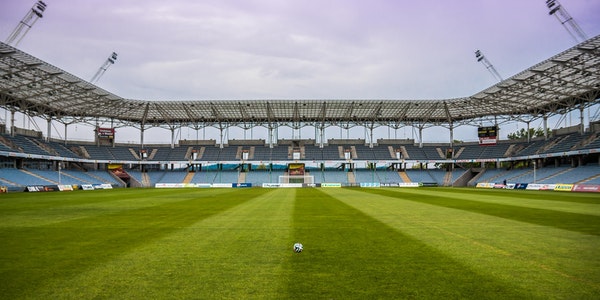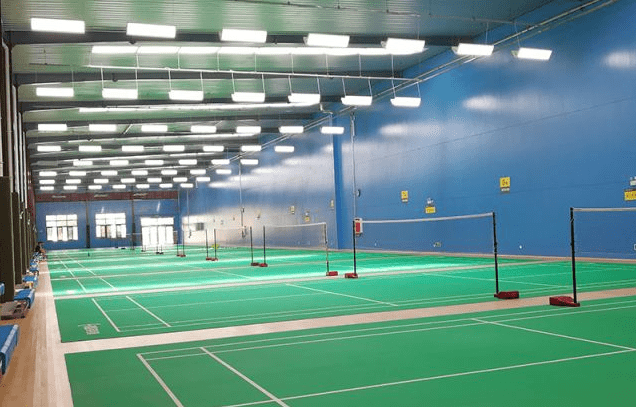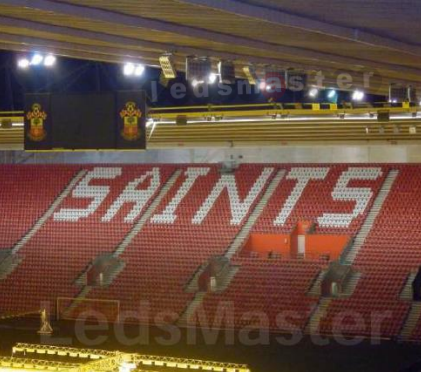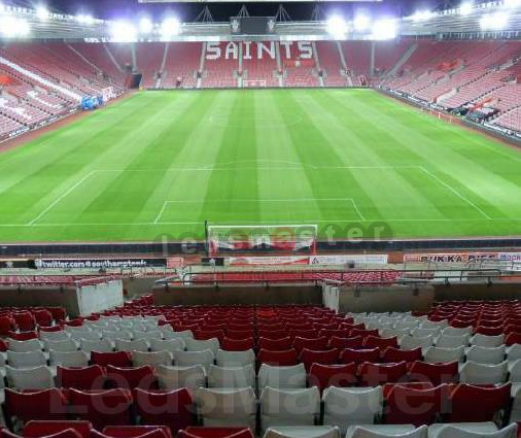(5) Versatility and Flexibility: LED lighting systems offer versatility and flexibility in design, installation, and operation, allowing sports facilities and events to adapt to changing needs and requirements. The ability to customize lighting schemes, colors, and effects enables venues to create unique atmospheres and experiences for different sports, events, and occasions.
(6) Environmental Sustainability: The transition to LED lighting aligns with broader sustainability initiatives and environmental stewardship efforts in the sports industry. Other sports facilities and events are increasingly adopting LED technology to reduce energy consumption, minimize carbon emissions, and demonstrate commitment to environmental responsibility.
(7) Regulatory Compliance: LED lighting systems may be subject to regulatory requirements, standards, and guidelines governing lighting design, energy efficiency, and safety in sports facilities and events. The adoption of LED technology sets a precedent for compliance with relevant regulations and standards, ensuring safe and sustainable lighting practices across the industry.
Overall, the influence of LED lighting technology extends beyond individual sports facilities and events, shaping industry standards, trends, and practices. As LED technology continues to evolve and become more accessible, its impact on other venues, events, and industries will continue to grow, driving innovation and transformation in the way lighting is used and experienced in sports and entertainment environments.
C. Integration with renewable energy sources
Integration of LED lighting with renewable energy sources presents an opportunity to create sustainable and environmentally friendly lighting solutions for sports facilities and events. Here’s how LED lighting can be integrated with renewable energy sources:
- Solar Power: Solar photovoltaic (PV) panels can be installed on the roof or surrounding areas of sports facilities to harness solar energy and generate electricity. The electricity generated from solar panels can be used to power LED lighting systems, providing clean, renewable energy for illuminating stadiums, arenas, and outdoor sports fields.
- Wind Power: Wind turbines can be installed on-site or in nearby locations to capture wind energy and convert it into electricity. Wind power can supplement the energy needs of LED lighting systems, especially in windy regions or open areas where wind turbines can operate efficiently and generate significant power output.
- Energy Storage Systems: Energy storage systems, such as batteries or flywheels, can be used to store excess energy generated from renewable sources during periods of high production. Stored energy can be utilized to power LED lighting systems during low production periods or peak demand times, ensuring reliable and uninterrupted lighting operation.
- Microgrid Solutions: Microgrid systems combine renewable energy sources, energy storage, and intelligent control systems to create self-sufficient and resilient energy networks. LED lighting systems can be integrated into microgrid solutions, allowing sports facilities to optimize energy use, reduce reliance on the grid, and enhance energy resilience and sustainability.
- Hybrid Lighting Systems: Hybrid lighting systems combine multiple energy sources, including renewable and conventional sources, to power LED lighting installations. By integrating renewable energy sources such as solar, wind, or biomass with grid power or backup generators, hybrid lighting systems can maximize energy efficiency and reduce dependence on fossil fuels.
- Smart Energy Management: Smart energy management systems can optimize the use of renewable energy sources and coordinate energy supply and demand in real-time. Advanced control algorithms and predictive analytics can optimize LED lighting operation based on renewable energy availability, energy prices, and facility usage patterns, maximizing energy savings and environmental benefits.
- Net-Zero Energy Buildings: Sports facilities aiming for net-zero energy consumption can achieve this goal by integrating LED lighting with renewable energy sources and energy-efficient building design strategies. By generating as much energy as they consume over the course of a year, net-zero energy buildings minimize environmental impact and operating costs while promoting sustainability.
Overall, integrating LED lighting with renewable energy sources offers sports facilities and events an opportunity to reduce carbon emissions, minimize environmental impact, and demonstrate commitment to sustainability. By leveraging clean and renewable energy sources to power LED lighting systems, sports venues can create greener, more energy-efficient, and resilient lighting solutions that enhance the fan experience and contribute to a more sustainable future.
VII. Conclusion
A. Recap of the benefits of LED stadium lighting
LED stadium lighting offers a multitude of benefits for sports facilities, teams, fans, and the environment. Here’s a recap of the key advantages:
- Energy Efficiency: LED lighting consumes less energy than traditional lighting sources, resulting in significant energy savings and reduced electricity bills for sports facilities.
- Cost Savings: LED lighting systems have lower operating costs and require less maintenance compared to conventional lighting technologies, resulting in long-term cost savings for sports venues.
- Environmental Sustainability: LED lighting reduces carbon emissions, minimizes light pollution, and promotes environmental stewardship by lowering energy consumption and reliance on fossil fuels.
- Improved Lighting Quality: LED fixtures provide brighter, more uniform illumination with better color rendering and reduced glare, enhancing visibility and creating optimal viewing conditions for players and spectators.
- Enhanced Fan Experience: LED lighting enables dynamic lighting effects, color changes, and immersive experiences that enhance the fan experience and create memorable atmospheres during sports events.
- Flexibility and Control: LED lighting systems offer flexibility in design, customization, and control, allowing sports facilities to adapt lighting settings to different events, activities, and user preferences.
- Longevity and Durability: LED fixtures have longer lifespans and greater durability than traditional lighting sources, reducing maintenance requirements and ensuring reliable performance over time.
- Integration with Renewable Energy: LED lighting can be integrated with renewable energy sources such as solar and wind power, creating sustainable and eco-friendly lighting solutions for sports facilities.
- Technological Innovation: LED lighting technology continues to evolve, driving advancements in efficiency, intelligence, and functionality, and opening up new possibilities for innovation in sports venue lighting.
Overall, LED stadium lighting delivers a range of benefits that contribute to energy efficiency, cost savings, environmental sustainability, and an enhanced fan experience, making it a preferred choice for sports facilities worldwide.
B. Importance of sustainability in sports
Sustainability in sports has become increasingly important due to its significant impact on the environment, society, and the long-term viability of the sports industry. Here are some key reasons highlighting the importance of sustainability in sports:
- Environmental Impact: Sports events and facilities can have a substantial environmental footprint, including energy consumption, water usage, waste generation, and carbon emissions. Embracing sustainability practices in sports helps mitigate environmental impact, conserve resources, and protect ecosystems for future generations.
- Climate Change Mitigation: The sports industry contributes to greenhouse gas emissions through energy consumption, transportation, and waste generation. By adopting sustainable practices, such as energy-efficient operations, renewable energy use, and carbon offset initiatives, sports organizations can contribute to global efforts to mitigate climate change and reduce carbon emissions.
- Resource Conservation: Sports facilities and events consume significant amounts of resources, including energy, water, materials, and land. Sustainable practices such as energy efficiency, water conservation, waste reduction, and responsible sourcing help conserve resources, minimize environmental impact, and promote resource efficiency in the sports industry.
- Social Responsibility: Sports organizations have a unique platform to raise awareness and promote social and environmental issues to a broad audience. Embracing sustainability demonstrates corporate social responsibility, fosters positive community engagement, and inspires fans, athletes, and stakeholders to take action on environmental and social challenges.
- Economic Viability: Sustainability initiatives in sports can lead to cost savings, operational efficiencies, and new revenue opportunities for sports organizations. Investing in energy-efficient infrastructure, green technologies, and sustainable practices can reduce operating costs, improve financial performance, and enhance long-term competitiveness in the sports industry.
- Health and Well-being: Sustainable sports facilities and events promote health and well-being by providing safe, accessible, and environmentally friendly spaces for physical activity, recreation, and community engagement. Green spaces, active transportation options, and sustainable design features contribute to healthier and more livable communities.
- Stakeholder Engagement: Sustainability initiatives in sports engage fans, athletes, sponsors, and other stakeholders in meaningful conversations and actions to address environmental and social issues. By involving stakeholders in sustainability efforts, sports organizations can build stronger relationships, enhance brand loyalty, and inspire collective action for positive change.
- Legacy and Reputation: Hosting sustainable sports events and leaving a positive legacy for host communities contribute to the reputation and legacy of sports organizations. Sustainable events showcase leadership, innovation, and commitment to environmental and social responsibility, leaving a lasting impact on communities, fans, and future generations.
Overall, sustainability in sports is essential for addressing environmental challenges, promoting social responsibility, and ensuring the long-term viability and success of the sports industry. By embracing sustainability principles and practices, sports organizations can lead by example, inspire positive change, and make a meaningful contribution to a more sustainable and resilient future.
C. Final thoughts on the future of stadium lighting and sustainability in sports
As we look ahead to the future of stadium lighting and sustainability in sports, it’s clear that these two areas will continue to intersect and evolve in significant ways. Here are some final thoughts on what the future may hold:
- Continued Adoption of LED Technology: LED lighting has become the standard for sports facilities worldwide due to its energy efficiency, longevity, and versatility. In the future, we can expect to see even greater adoption of LED technology as it becomes more affordable, accessible, and advanced, leading to further energy savings, improved lighting quality, and enhanced fan experiences.
- Integration with Renewable Energy: Sports venues will increasingly integrate LED lighting with renewable energy sources such as solar, wind, and energy storage systems. This integration will not only reduce carbon emissions and environmental impact but also enhance energy resilience, cost savings, and sustainability in sports facilities.
- Smart Lighting and IoT Connectivity: The convergence of LED lighting with smart technologies and Internet of Things (IoT) connectivity will enable the development of intelligent lighting systems that can adapt, optimize, and interact with their environment in real-time. Smart lighting solutions will enhance operational efficiency, user comfort, and sustainability in sports venues through automated control, data analytics, and predictive maintenance.
- Sustainable Design and Green Building Practices: Future sports facilities will prioritize sustainability in their design, construction, and operations, incorporating green building practices, energy-efficient technologies, and environmentally friendly materials. Sustainable design features such as passive solar design, natural ventilation, and green roofs will minimize environmental impact and promote resource efficiency in sports architecture.
- Fan Engagement and Education: Sports organizations will play a crucial role in engaging fans, athletes, and stakeholders in sustainability initiatives and raising awareness about environmental and social issues. Through educational programs, fan activations, and community outreach, sports venues will inspire fans to adopt sustainable behaviors, reduce their environmental footprint, and support sustainable practices in sports.
- Collaboration and Innovation: Collaboration between sports organizations, government agencies, industry stakeholders, and sustainability experts will drive innovation and best practices in stadium lighting and sustainability. Partnerships, knowledge sharing, and collective action will accelerate progress towards more sustainable, resilient, and equitable sports environments.
- Leadership and Influence: Sports organizations have the opportunity to lead by example and influence positive change in the broader community. By demonstrating commitment to sustainability, setting ambitious goals, and taking concrete actions to reduce environmental impact, sports venues can inspire other industries, cities, and organizations to prioritize sustainability and work towards a more sustainable future for all.
In conclusion, the future of stadium lighting and sustainability in sports holds great promise for innovation, collaboration, and positive impact. By embracing LED technology, renewable energy integration, smart lighting solutions, sustainable design practices, and fan engagement initiatives, sports organizations can create greener, more efficient, and more engaging sports environments that benefit both people and the planet. Together, we can build a more sustainable future for sports and inspire positive change around the world.






